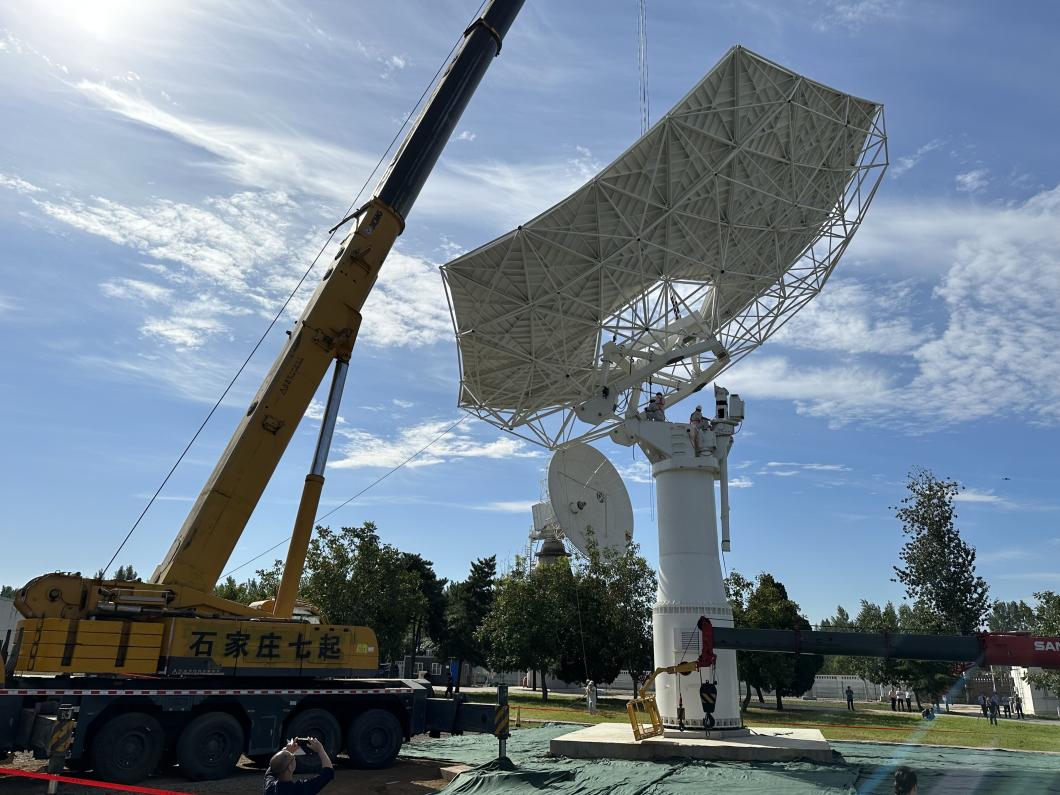First SKA-Mid telescope production dish assembled in China

Can't see the video above? View and download it here.
The dish is one of four that will comprise the first stage of SKA-Mid construction, known as Array Assembly 0.5 (AA0.5), on site in the Karoo, South Africa.
Comprising 66 separate panels, the structure stands more than six storeys tall and weighs over 50 tonnes.
Chinese company CETC54, which received the contract to construct the SKA-Mid telescope dishes, conducted the “big lift” of the main reflector onto the pedestal at a site on the outskirts of the city of Shijiazhuang, ahead of factory acceptance tests.
With a fully assembled dish at hand, engineers will be able to quickly investigate and solve any issues when the next three dishes are shipped to South Africa and installed on site. This first production dish will then be taken apart and also sent to the Karoo.
“Assembling the first SKA-Mid dish is the culmination of years of design work and the contribution of many people and partners around the world. We’ve seen prototypes constructed in recent years and that’s been exciting, but this is the first component of the actual SKA-Mid telescope, and seeing it take shape is very special for everyone involved,” said SKA-Mid Senior Project Manager Ben Lewis.
“The next step, after the first four dishes have been manufactured, is a review to ensure our processes are as efficient as possible and to iron out any issues. As we head into 2024, the team is fully focused on AA0.5 and seeing the first four dishes take their place on site in South Africa.”
Prof. Du Biao, Chief Engineer, SKA-Mid Dish Structure at CETC54 said: "The SKA dish has extremely stringent requirements in key areas, including the antenna efficiency, the beam shape and the pointing accuracy - achieved by careful manufacturing, testing and alignment - and of course ensuring that the components of the dish structure itself do not cause electromagnetic interference in the sensitive radio frequency detectors installed on the dish and on dishes in close proximity.
"The challenges that posed for us were unprecedented, and we had to undertake innovative research on a series of key technologies such as electromagnetic compatibility design, structure homology design, dynamic simulation, alignment research and qualification test procedures, in order to meet the technical requirements set by the SKAO."
Thanks to their designs as interferometers where a multitude of receivers work together as one instrument, the SKAO telescopes are being built in four stages.
Across the Indian Ocean in Western Australia, construction of the SKA-Low telescope is also progressing at pace, with groundworks well underway to facilitate the installation of the first six antenna stations. The first batch of antennas themselves arrived in the country from Italy earlier this year.





